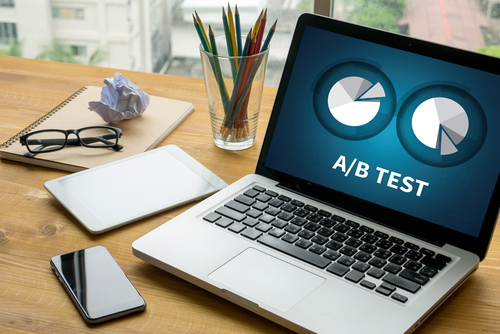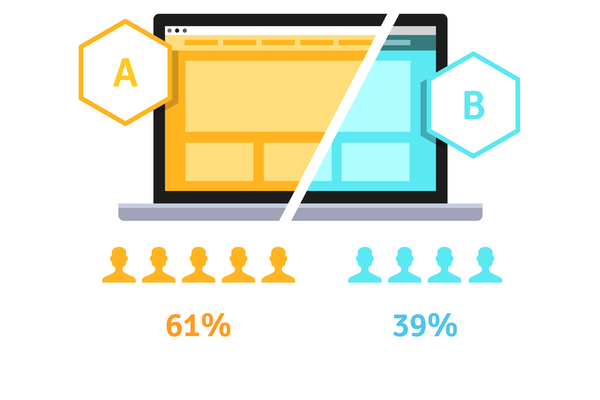A/B testing in surveys:
How Important is it?

Whenever we create a landing page, write an email, or design a call-to-action button, we all reply on guesses or assumptions to predict what visitors will click and convert.
But feelings and assumptions and intuitions are not the right way to derive a conclusion of the customer’s behavior, rather detrimental. The best way to understand your visitors’ behavior is by running an A/B test.
If you’re new to A/B testing, worry not, we’ll help you through it. Let’s start with the basics.
What is A/B testing in surveys?

A/B testing, also known as split testing or bucket testing, is a process used to determine if a specific change on a webpage will influence conversion negatively or positively. With A/B testing, you can see two variants of the same web page simultaneously and compare - to see which version can help drive in more conversion.
A/B testing is a crucial part of the CRO (Conversion Rate Optimization). It is a conversion funnel that decides whether your website gets good traffic and whether it is successful in converting more visitors.
How to conduct A/B testing surveys?
A/B is a systemic approach to find out what works and what doesn’t in any given marketing campaign. Structured A/B testing can help businesses achieve their goals by converting traffic in the fastest and most efficient manner.
Here is a useful guide for A/B testing the right way.
- Research
The first step of A/B testing includes thorough research on how the website performs, how many visitors are coming onto your site, the bounce rate, time spent per page, or even the scrolling behavior. You can use various quantitative website analytics tools like Google Analytics, and Mixpanel to conclude the quantitative aspect of traffic.
To find the qualitative aspect of your website, like where the users are spending much time, visitors’ behavior, gaps in the journey, etc., you need insightful tools to make actionable observations to start with the next step.
- Observe and Formulate Hypothesis
After gathering the visitor’s data, the next step is to analyze the data obtained and create a data-backed hypothesis primarily aimed at increasing traffic and conversions.
Once you’ve prepared the hypothesis, test it against various parameters, its impact, and so on.
- Create Variations
The next step is to create a variation based on the hypothesis, using your testing program against the existing control to find out which might work from a UX perspective. You can use multiple variations to find which variation works best.
- Run Test
There are different methods of running testing, including A/B testing, Split URL Testing, and Multivariate Testing.
You can use any of these based on your website needs and business goals to achieve statistically significant results.
- Result Analysis and Deployment
As A/B testing calls for continuous data analysis and gathering, therefore analyzing data is a crucial step that the entire journey unravels.
After conducting the test, compare the results against percentage increase, metrics, and impact to draw insights and implement them in the subsequent trials.
What are the benefits of A/B testing?
- Increased website traffic.
- Higher conversion rate.
- Lower bounce rate.
- Lower cart Abandonment.
- Reach your goals faster.
- Increase the efficacy of sales funnels and funnel testing.
- Healthier websites and landing pages.
Final Thoughts
A/B Testing helps to get the truth about your content and webpage. It is an excellent tool to improve customers’ experience and website performance.

